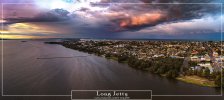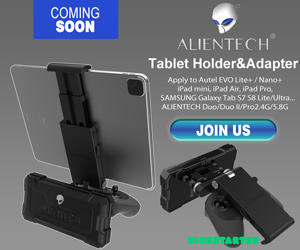IMO the histogram is better than zebras; I've tried them all, below is how I rank them and for what purpose...the below list and order is just my personal preference:
VIDEO
- Wave Form Monitor (WFM) - without a doubt this is truly the best tool to use when shooting video especially LOG footage, it will show you the entire DR of the sensor and it adjusts based on the LOG curve in use. The problem is most cameras do not offer the WFM for some reason. The other nice thing about the WFM is it will translate exactly into the WFM in the NLE when it comes to post processing so you can use the same tool throughout the video's entire workflow.
- Histogram - the histogram is nearly as good as the WFM, it will also show you the entire DR of the sensor and it will also adjust based on what color profile you are using. For video, the histogram is not as good as the WFM because it does not map to IRE values so it is not as useful when exposing for skin tones. With drones however, since drones are typically high up and not near people, you are simply exposing the entire scene so skin tones aren't really that important. Also, within your video editing software, you typically use a WFM for color grading not the histogram so now you have to translate the histogram values into WFM IRE values
- Zebras - Zebras are OK for exposing a scene, but they do not show you the entire DR of the sensor, they only show what the highlights are doing. When exposing a scene, I like to know if I am clipping the blacks as well and by how much. With the histogram I can deliberately choose to make the highlights a priority (such as during a sunset) but I still want to see how much I am clipping the blacks to decide where to strike a balance. For things like real estate where sometimes it is strongly backlit but the property is the priority, then I can use the histogram to prioritize the mids or shadows at the expense of the highlights. Zebras would not show at all what the mids or lows are doing.
- False Color - This one is great for skin tones but doesn't really apply to drones since drones are typically too high up and too far away from humans for skin tones to matter as much. Not to mention this one most cameras do not have either. Falso color also needs to be turned on and off because you can't shoot with it on. In a studio setting or locked down setting that's fine, but in fast paced environments like events, sports, even weddings, there's no time to fiddle with things like this.
PHOTOGRAPHY
- Histogram - For photography the histogram is the only thing I use for exposure. It has all of the benefits of using it for video with the added benefit that it is also the tool you typically use in post processing images so it translates directly from the screen output to the post processor. A final benefit of the histogram is that literally every modern camera has it. My newest mirrorless cameras even display it in the viewfinder, something the DSLRs didn't do, so the histogram is without a doubt the most useful exposure tool out there.
- Zebras - For photography, like for video zebras only show over exposure. If you are prioritizing highlights for something like a sunset and want to be absolutely certain nothing is over exposed in the sky, then zebras would be useful; however the histogram shows the same information but also shows the lows. One benefit zebras have is they are easier to see in most situations on a screen vs the histogram. A final downside to zebras is that they are simply distracting; in slow moving environments you have time to turn them on and off, in fast paced event work it could be a different story.
Its really not bad, where people go wrong is when they overload the screen with multiple exposure tools and then try to process all of the input at once when taking a picture or shooting video. A better approach is to learn one or two tools very well and only use them when composing and taking a shot or shooting video. For me that tool is the WFM if the camera offers it or the Histogram when it doesn't. I ignore the exposure meter (horribly inaccurate most of the time or set improperly) and the screen's display (not calibrated, too reliant on the screen's settings).
Speaking of the exposure meter, many cameras have them and they are usually only good at getting you close to the right place for exposure. The problem with exposure meters is they can be quite deceptive on what exactly they are telling you. Depending on the settings and the camera, the exposure meter could be prioritizing the highlights, prioritizing the shadows, showing you exposure for whatever is in focus, showing you an average of the entire scene, etc.
With exposure meters you really need to dig into the settings to figure out how they are set and those settings could change without your knowledge (by someone else or accidentally) which could ruin a future or present shoot. I have worked side by side with photographers who had their exposure meters set wrong and they had a lot of work ahead of them trying to recover those highs or lows.







